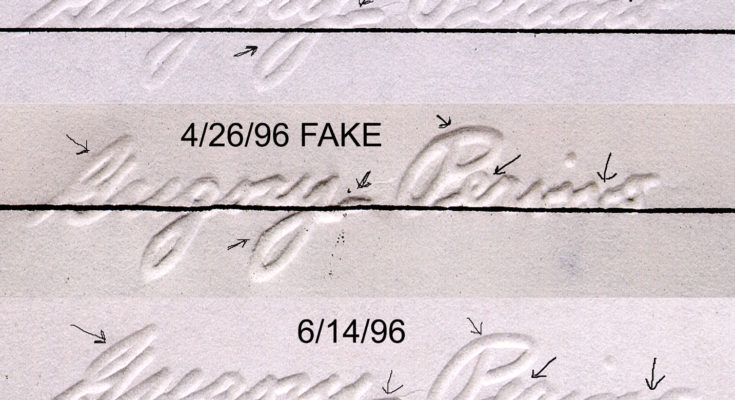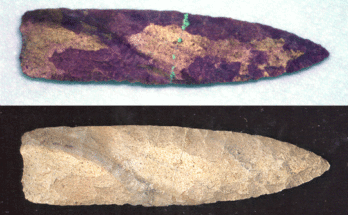By Alexander Przygoda 6/13/2004
  |
| Gregory Perino Embossing Seal from first known use in a letter to Ray Fraser dated 1989 |
Foreword
Gregory Perino is a true luminary to every Artifact Collector, Dealer, Amateur Archaeologist, and Authenticator of Native American lithics. Mr. Perino is well known for his work at Spiro Mounds, Cahokia, his work at the Gilcreast Institute of American History, and the Red River Archaeological Museum in Idabel Oklahoma. Greg was the first individual to offer consulting services for authenticating flint artifacts in the country. His reputation and lifetime of achievements is second to none. To our mutual great regret in recent years a number of fradulent certificates bearing the Perino stamp have surfaced in the artifact market. This document specifically addresses this rash of fraudulent certificates that have appeared in recent years and focuses on their detection in hopes of bringing down the perpetrators of this heinous crime against Mr. Perino and the Collecting Public as a whole.
History of the Signature Stamp
While investigating the fraud with the full cooperation and assistance of Mr. Perino, we learned he first acquired the signature stamp from Ray Fraser of Fraser Stamp & Die Co. in late May, 1989 after some initial concern over his paperwork being faked even then. This stamp consists of a hard brass die, and a softer counter plate of which presses the embossed signature into the paper. The lifespan of a brass embossing die is rated regularly at over 100 years by those who make such embossing equipment. The lifespan of the counter-plate however, can be much shorter, and such was the case with Greg’s stamp. In late 1999, Greg requested that a second embossing seal be made, and Ray Fraser did create a 2nd seal. However this seal was not to Greg’s liking, and was never used. Greg instead sent the first stamp back to Ray where a new counter-plate was pressed from the brass die. As a result of this investigation, Ray Fraser has recently taken back the second seal into his custody.
  |
| Exemplar of 2nd seal made by Ray Fraser |
 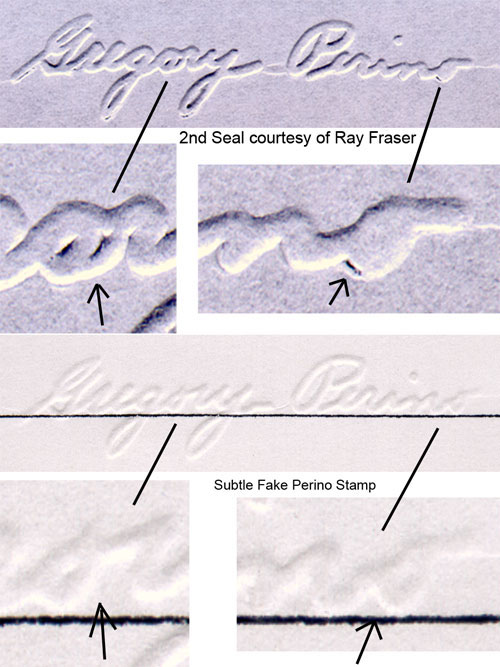 |
| Closeup of 2nd seal flaws compared to a known fake stamp. |
A New Form of Artifact Fraud
The first known example of a faked Gregory Perino embossed certificate arose sometime in the early 1990’s, with the circulation of the now laffable “G. D. Perino” moniker. This form is rarely seen anymore, and consists of a completely new fabricated blank certificate with a different address and G. D. Perino embossed signature. Unfortunately, no examples were readily on hand for this article, but please be aware of them. As the years progressed, the fakers improved upon their craft and came out with the two stamps shown below. Both could not be confused with the real McCoy, however their usage also should be noted. The real problem has only popped up in the last 3 or 4 years. Two new fraudulent seals have been exposed that are so extremely close, they would pass in a fast moving crowd. The differences are so subtle, that a trained eye and careful inspection should reveal the truth.
  |
| Fake Embossing Seal #1 |
  |
| Fake Embossing Seal #2 |
  |
| Correct Perino Stamp |
  |
| Fake Embossing Seal #3 |
  |
| Fake Embossing seal #4 |
Methodology
To identify these fake certificates, well-proven techniques used by the FBI, Secret Service, and Banking Institutions are brought into play.
Signature Analysis
It stands to reason, that given only one seal in use, all signatures will be equal. After examining over 1,000 certificates and letters ranging from June, 1989 to May, 2004, we find this to be true. The erosion of the counter-plate is even visible in certificates dated 1999 and the replacement in 2000 with fresh, crisp stamps. Time-Lapse videos illustrate this even further. Details such as the width of gaps between loops of certain letters and incident angles on others become extremely evident in the case of a fake stamp.
  Animation of Authentic Perino Stamps from 1989 to 2004 Animation of Authentic Perino Stamps from 1989 to 2004 |
  Animation of Perino Stamp from 1989 to 2004, incorporating fake stamps Animation of Perino Stamp from 1989 to 2004, incorporating fake stamps |
Paper Bond Analysis
Another method to identify aberrant certificates is through the use of UltraViolet light to identify paper of different bond and level of whitening agent. Paper from the same batch and time period should fluoresce identically due to a common manufacturing process with various whitening agents, grade of pulp, wood base, and surface finish. This method allowed us to track Mr. Perino’s paper usage over the years, and papers that differ when compared to others from the same time period were set aside for closer inspection. Note the atypical UV results on papers that proved to have a fake embossing seal.
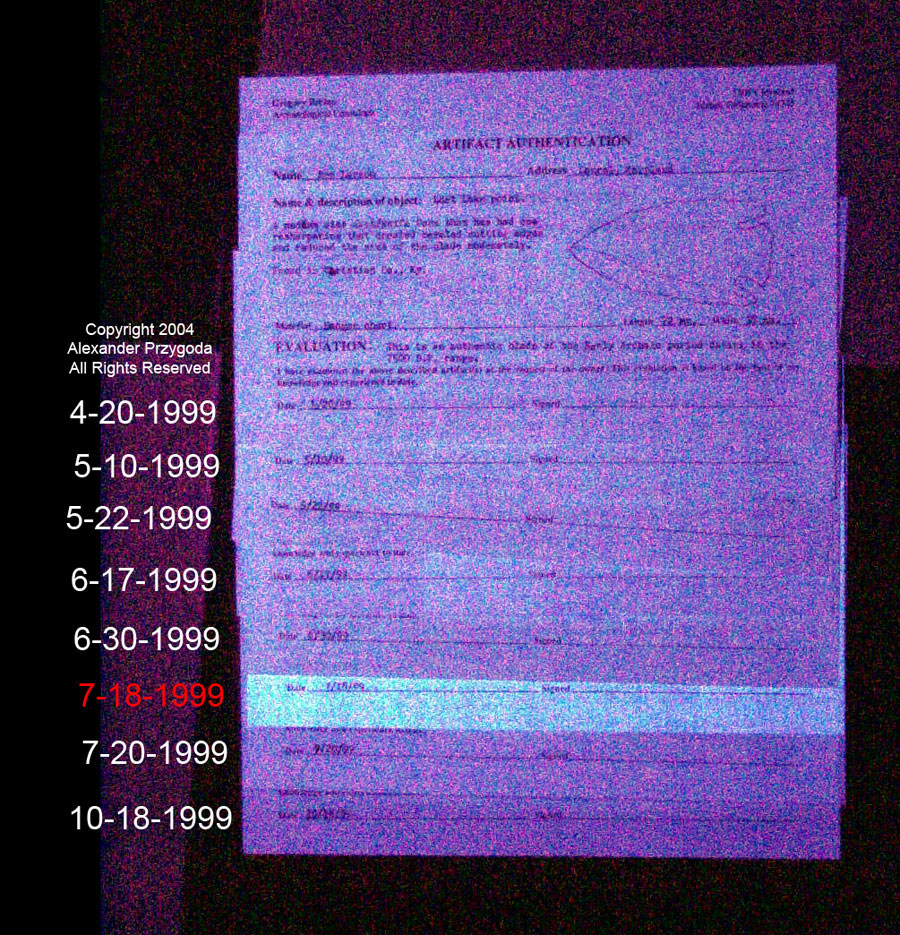  |
 |
 |
Typewriter Flaws
Many have used flaws in Mr. Perino’s typewriter as a benchmark when determining if a paper is correct. Over time, the mechanical workings and actual dies of certain letters of older typewriters can wear out, causing the imprints of certain letters to appear faded on certain edges as well as become misaligned above or below the rule line when typed. “Dropped e’s” and “faded m’s” are some of the most commonly seen flaws with his Typewriter. However – Typewriters can be tuned, letters can be filed or worn down to simulate the characteristics of his typewriter. Some of the identified fake certificates are extremely close. They share the same font and some of the flaws of Greg’s model. While not a conclusive piece of evidence, typewriter signatures add to the body of evidence when identifying faked certificates.
Variations in the Stamp
Below you will find closeup pictures of the areas that will help you identify a fraudulent embossing seal. There are numerous other errors in the fake seals however these are the most easily identified with simple examination.
 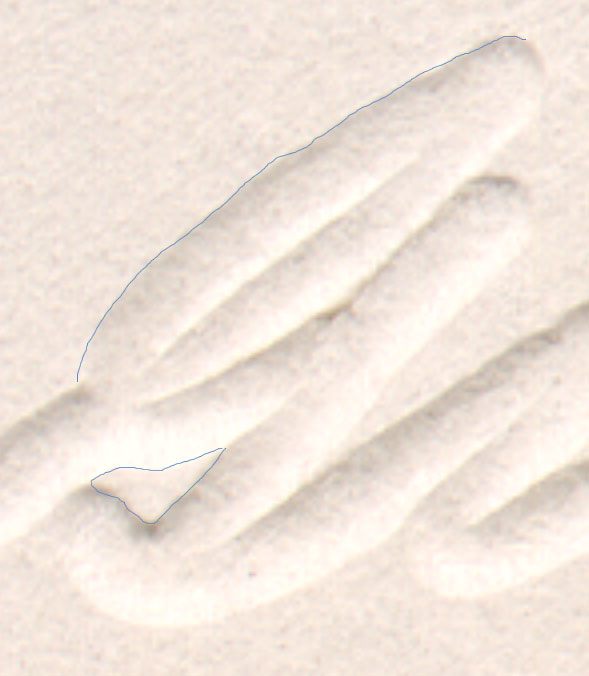 |
A Correct “G” |
  |
A fake #4 ‘G’ |
  |
A fake #3 “G” |
  |
A correct ‘go’ |
  |
A fake #4 ‘go’ |
  |
A fake #3 ‘go’ |
  |
A correct ‘er’ |
  |
A fake #4 ‘er’ – note the open loop in the ‘e’ |
 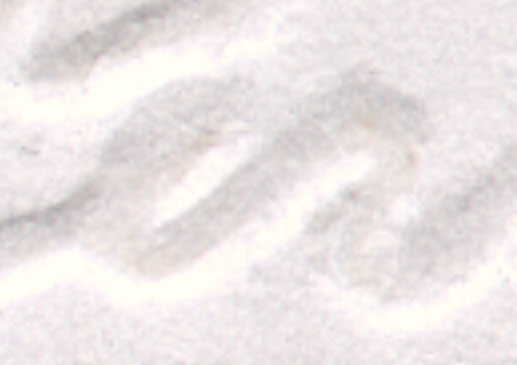 |
A fake #3 ‘er’. Note the angle of ‘r’ |
  |
A correct ‘no’ |
 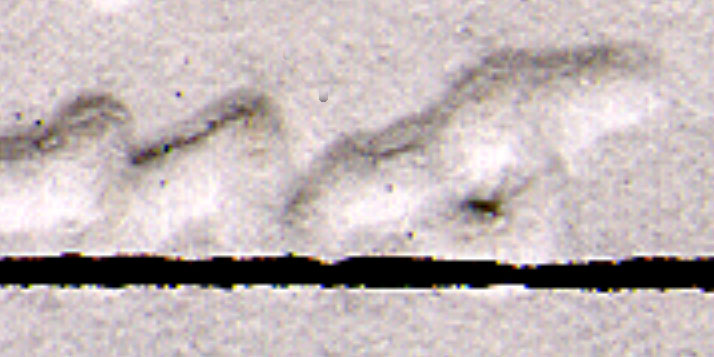 |
A fake #4 ‘no’ |
  |
A fake #3 ‘no’ |
Crimes
As part of any investigation into potential criminal activity, we would like to make known a few of the extremely serious charges that the conspirators behind this fraud against Mr. Perino, his reputation, and the collecting community as a whole. The Federal, State, and Civil charges that the criminal(s) may be facing are not limited to Fraud, Interstate Mail Fraud, Identity Theft, Theft by Deception, Counterfeiting, Conspiracy to Commit Fraud, Defamation of Character, and numerous other felony charges on top of those with fines or sentencing between $10,000.-$250,000 or between 3-25 years for each certificate.
Call To Arms
This article should encourage the collecting community to seek out and catch these criminals, who are harming Mr. Perino and our hobby with every fraudulent piece and paper they produce. When these pieces are being sold for untold thousands of dollars, the stakes are extremely high. The honest collector and dealer alike WANT their collections and inventory to be clean and free from fakes as well as wanting their investment in Perino papered pieces to hold their value for years to come. If you have any information about catching these criminals, do not hesitate to contact us with it. Let’s resolve this now!!
2008 – Addendum:
It has been reported back to me that a number of misguided and ill-intentioned people believe and have spread the rumor that I have affected Mr. Perino’s reputation on-purpose to devalue the opinion of Mr. Perino with regards to artifacts bearing his COA. Make NO mistake, as a dealer with an investment in Perino COA’s, do they honestly believe that I would affect the value of my OWN inventory in such a way? Incredible. The true intention of this article is to inform the public so they might identify a correct Perino COA for themselves.
All Text and Images Copyright © 2004 Alexander Przygoda All Rights Reserved.

